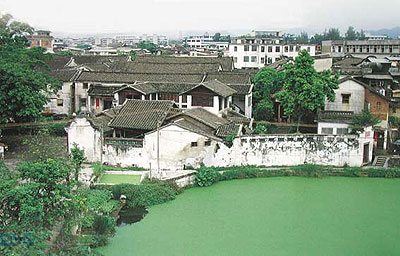
Free-style residences refer to residences without courtyards, residences whose overall structure and single pattern are both very free. They are mostly distributed in the countryside and small towns in the south, and are mostly used by people of the medium and lower strata. Free-style residences are mostly small in scale. Special attention is paid to the rational use of space, but the system of discipline rites featuring the elite, the lowly, the upper and lower levels, and the close and distant relationship is not particularly stressed. Its design idea is close to'-functionalism". However, they still pursue the beauty of appearance, because they have thrown off the shackle of discipline rites, emancipated the mind, so that their combination is flexible and therefore they are more diversified in form.
The molding characteristics of free-style residences are:
(1) Most of them are a building linked to both the plain and theroof. A variety of techniques are applied to create a rich space leading to all sides-upper, lower, left and right parts, their Outward side is open and exposed, Without any courtyard wall and is integrated with nature.
(2) Their style is free, without paying attention to regulation and symmetry. They are constructed in the form either with the slope of the house being small in the front and large at the back; or with the house standing next to top single-storied house; or with the roof partly standing above the attic, which is either in the front or back slope, or in the middle. The ground varies with the different elevation of the base. Different rooms vary in height, and one and the same room is allowed not to be in the same plane, or one side and another side of a house not to be on the same floor. In short, compared with regulated residences, free-style residences are constructed without preconceived idea. Instead, they are decided completely in the light of the on-site situation, using every ingenious skill to make them changeable.
(3) These changes are made mostly by the use of a folk light frame, called through Jointed frame. A simple treatment can result in many wonderful changes, demonstrating utmost flexibility.
(4) All materials used are mostly indigenous and economical products. The roof is covered with small gray tiles or thatch. Walls are set up with small gray bricks, woven fence and plastering lime, planks, riprap stones, riprap rocks or mud; uncolored wood and wall plaster are used according to need, forming a natural contrast between color, texture and quality sense. The naturally exposedwooden structureon the wall, demonstrating the alternate beauty of the structure, gives a kind of pure and artless interest.
(Source: chinaculture.org)

Copyright ©1999-2011 Chinanews.com. All rights reserved.
Reproduction in whole or in part without permission is prohibited.